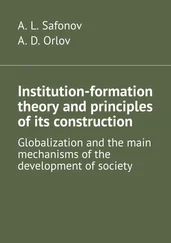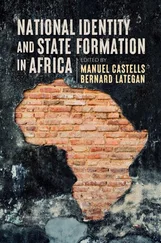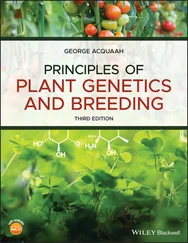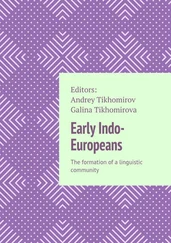Planet Formation and Panspermia
Здесь есть возможность читать онлайн «Planet Formation and Panspermia» — ознакомительный отрывок электронной книги совершенно бесплатно, а после прочтения отрывка купить полную версию. В некоторых случаях можно слушать аудио, скачать через торрент в формате fb2 и присутствует краткое содержание. Жанр: unrecognised, на английском языке. Описание произведения, (предисловие) а так же отзывы посетителей доступны на портале библиотеки ЛибКат.
- Название:Planet Formation and Panspermia
- Автор:
- Жанр:
- Год:неизвестен
- ISBN:нет данных
- Рейтинг книги:3 / 5. Голосов: 1
-
Избранное:Добавить в избранное
- Отзывы:
-
Ваша оценка:
- 60
- 1
- 2
- 3
- 4
- 5
Planet Formation and Panspermia: краткое содержание, описание и аннотация
Предлагаем к чтению аннотацию, описание, краткое содержание или предисловие (зависит от того, что написал сам автор книги «Planet Formation and Panspermia»). Если вы не нашли необходимую информацию о книге — напишите в комментариях, мы постараемся отыскать её.
Audience
Planet Formation and Panspermia — читать онлайн ознакомительный отрывок
Ниже представлен текст книги, разбитый по страницам. Система сохранения места последней прочитанной страницы, позволяет с удобством читать онлайн бесплатно книгу «Planet Formation and Panspermia», без необходимости каждый раз заново искать на чём Вы остановились. Поставьте закладку, и сможете в любой момент перейти на страницу, на которой закончили чтение.
Интервал:
Закладка:
Such a development should not unduly worry us at present for several reasons. First, it is certainly not an immediate prospect. More important, however, is the history-tested conclusion that all theoretical concepts in empirical science have limited lifetime, as our theories are continuously improving and each particular framework is being substituted by an explanatorily better or a more efficient one. Habitability is an immensely useful concept for these early days of astrobiology and it is likely to remain so for decades to come, but we should be aware that it is largely constrained by our anthropocentric and geocentric viewpoint; calls for overcoming the latter can already be heard [3.40]. Not rejecting, but transcending the present-day understanding of habitability will be one of the clearest proofs of progress, and indeed the greatest triumph of future astrobiology.
Acknowledgements
Useful comments of an anonymous referee are hereby acknowledged. The author wishes to thank Ksenija Petrović, Adrian Lenardic, Amedeo Balbi, Ana Katić, Anders Sandberg, George Dvorsky, John Smart, Slobodan Perović, Karl Schroeder, Ana Roljević, Aleksandar Obradović, Milan Stojanović, Goran Milovanović, Srdja Janković, the late Damian Veal, and the Editors who offered helpful suggestions and pleasant conversations on the related topics. Dušan Pavlović has kindly helped in obtaining some of the literature. South Korean rock diva Jihae is acknowledged for providing musical inspiration during the work on this chapter.
References
[3.1] Adams, M.B., Last Judgement: The Visionary Biology of J. B. S. Haldane. J. Hist. Biol ., 33, 457–491, 2000.
[3.2] Adams, F.C. and Laughlin, G., A dying universe: the long-term fate and evolution of astrophysical objects. Rev. Mod. Phys ., 69, 337–372, 1997.
[3.3] Aristotle, Ethics , 1984 (transl. by J.A.K. Thompson), Penguin, London. [3.4] Arlazorov, M.S., Konstantin Tsiolkovsky: Russian scientist , Encyclopædia Britannica, Inc. 2020, https://www.britannica.com/biography/Konstantin-Eduardovich-Tsiolkovsky.
[3.5] Armstrong, S. and Sandberg, A., Eternity in six hours: Intergalactic spreading of intelligent life and sharpening the Fermi paradox. Acta Astronaut ., 89, 1–13, 2013.
[3.6] Balashov, Y., Uniformitarianism in Cosmology: Background and Philosophical Implications of the Steady-State Theory. Stud. Hist. Philos. Sci ., 25B, 933–958, 1994.
[3.7] Balbi, A., Why we should take interstellar panspermia seriously, in: Planet Formation and Panspermia: New Prospects for the Movement of Life through Space [PNSP, Volume in the series Astrobiology Perspectives on Life of the Universe] , R. Gordon and J. Seckbach (Series Eds.), In preparation , B. Vukotić, J. Seckbach, R. Gordon (Eds.), Wiley-Scrivener, Beverly, Massachusetts, USA, 2020, Accepted, This volume.
[3.8] Beech, M., Gordon, R., Seckbach, J. (Eds.), Terraforming Mars [TMRS, Volume in the series Astrobiology Perspectives on Life of the Universe] , R. Gordon and J. Seckbach (Eds.), in preparation , Wiley-Scrivener, Beverly, Massachusetts, USA, 2021.
[3.9] Behroozi, P. and Peeples, M.S., On the history and future of cosmic planet formation. Mon. Notices R. Astron. Soc ., 454, 1811–1817, 2015.
[3.10] Bondi, H. and Gold, T., The Steady-State Theory of the Expanding Universe. Mon. Notices R. Astron. Soc ., 108, 252–270, 1948.
[3.11] Bostrom, N., Superintelligence: Paths, Dangers, Strategies , Oxford University Press, Oxford, 2014.
[3.12] Chopra, A. and Lineweaver, C.H., The case for a Gaian bottleneck: the biology of habitability. Astrobiology , 16, 7–22, 2016.
[3.13] Ćirković, M.M., The Astrobiological Landscape: Philosophical Foundations of the Study of Cosmic Life , Cambridge University Press, Cambridge, 2012.
[3.14] Ćirković, M.M., The Great Silence: The Science and Philosophy of Fermi’s Paradox , Oxford University Press, Oxford, 2018.
[3.15] Ćirković, M.M., Into the Artifice of Eternity: Alien Technology and Exploratory Engineering in the Fiction of Lem, Reynolds, and Schroeder , Springer, Cham, 2020, in press.
[3.16] Ćirković, M.M. and Balbi, A., Copernicanism and the Typicality in Time. Int. J. Astrobiology , 19, 101–109, 2020.
[3.17] Crick, F.H. and Orgel, L.E., Directed panspermia. Icarus , 19, 341–346, 1973.
[3.18] Davies, P.C.W., Does life’s rapid appearance imply a Martian origin? Astrobiology , 3, 673–679, 2003.
[3.19] Dick, S.J., The Biological Universe: The Twentieth-Century Extraterrestrial Life Debate and the Limits of Science , Cambridge University Press, Cambridge, 1996.
[3.20] Dick, S.J., Cultural Evolution, the Postbiological Universe and SETI. Int . J. Astrobiology , 2, 65–74, 2003.
[3.21] Đošović, V., Vukotić, B., Ćirković, M.M., Advanced aspects of Galactic habitability. Astron. Astrophys ., 625, A98, (8pp), 2019.
[3.22] Dyson, F.J., The search for extraterrestrial technology, in: Perspectives in Modern Physics , R.E. Marshak (Ed.), pp. 641–655, Interscience Publishers, New York, 1966.
[3.23] Dyson, F.J., Time without end: Physics and biology in an open universe. Rev. Mod. Phys ., 51, 447–460, 1979.
[3.24] Dyson, F.J., Looking for life in unlikely places: reasons why planets may not be the best places to look for life. Int. J. Astrobiology , 2, 103–110, 2003.
[3.25] Dyson, F.J., A Many-Colored Glass: Reflections on the Place of Life in the Universe , University of Virginia Press, Charlottesville, 2007.
[3.26] Fowles, J., On chronocentrism. Futures , 6, 65–68, 1974.
[3.27] Fry, C.L., From technology to transcendence: Humanity’s evolutionary journey in 2001: A Space Odyssey . Extrapolation , 44, 331–343, 2003.
[3.28] Fry, I., Are the different hypotheses on the emergence of life as different as they seem? Biol. Philos ., 10, 389–417, 1995.
[3.29] Fry, I., The Emergence of Life on Earth: A Historical and Scientific Overview , Rutgers University Press, New Brunswick, 2000.
[3.30] Fry, I., The role of natural selection in the origin of life. Orig. Life Evol . Biosph ., 41, 3–16, 2011.
[3.31] Fry, I., Is science metaphysically neutral? Stud. Hist. Philos. Biol. Biomed . Sci ., 43, 665–673, 2012.
[3.32] Gros, C., Developing ecospheres on transiently habitable planets: The Genesis Project. Astrophys. Space Sci ., 361, 1–14, 2016.
[3.33] Gross, P.R. and Levitt, N., Higher superstition: The academic left and its quarrels with science , JHU Press, Baltimore, 1997.
[3.34] Haldane, J.B.S., Possible Worlds and Other Essays , Harper and Brothers, London, 1927.
[3.35] Katz, E. and Oechsli, L., Moving beyond anthropocentrism: environmental ethics, development, and the Amazon. Environ. Ethics , 15, 49–59, 1993.
[3.36] Kragh, H., Cosmology and Controversy , Princeton University Press, Princeton, 1996.
[3.37] Lammer, H., Zerkle, A.L., Gebauer, S., Tosi, N., Noack, L., Scherf, M., Pilat-Lohinger, E., Güdel, M., Grenfell, J.L., Godolt, M., Nikolaou, A., Origin and evolution of the atmospheres of early Venus, Earth and Mars. Astron. Astrophys. Rev ., 26, 2, (72pp), 2018.
[3.38] Last, C., Big hHistorical foundations for deep future speculations: cosmic evolution, atechnogenesis, and technocultural civilization. Found. Sci ., 22, 39–124, 2017.
[3.39] Lem, S., Solaris , [translated by J. Kilmartin, S. Cox], Faber and Faber, London, 1961, 2016.
Читать дальшеИнтервал:
Закладка:
Похожие книги на «Planet Formation and Panspermia»
Представляем Вашему вниманию похожие книги на «Planet Formation and Panspermia» списком для выбора. Мы отобрали схожую по названию и смыслу литературу в надежде предоставить читателям больше вариантов отыскать новые, интересные, ещё непрочитанные произведения.
Обсуждение, отзывы о книге «Planet Formation and Panspermia» и просто собственные мнения читателей. Оставьте ваши комментарии, напишите, что Вы думаете о произведении, его смысле или главных героях. Укажите что конкретно понравилось, а что нет, и почему Вы так считаете.












